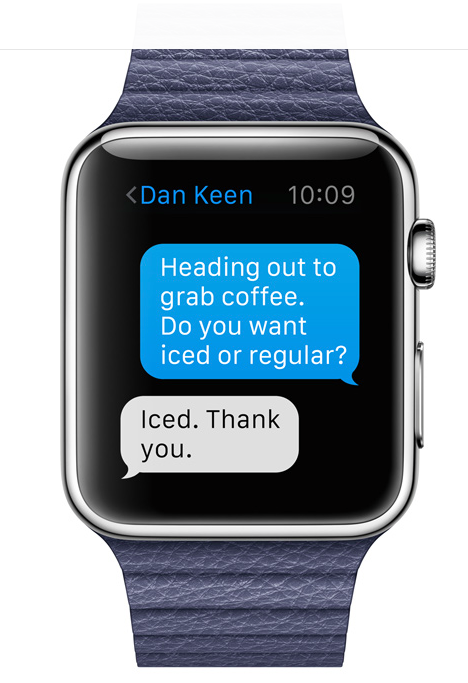

The new Apple Watch: available in 2015, opens a new era of glance journalism—and greater demand for seductive headlines.
Responsive design brings us the ability to capture visually the same elements regardless of the platform screen with which we are engaged.
With the announcement of the Apple Watch, and its availability in 2015, we are likely to see the best definition yet for something that started in earnest in the 1980s and evolved to its best in the 1990s: the “at a glance” look at news and details of major events.
It was during those decades that newspaper design erupted as a major force, but it was also the time when editors—we must say, inspired by the arrival of USA Today—began to realize that while the length of a story might not be compromised too much, it was time to worry about scanners. That ’s how those popular “at a glance boxes” developed.
As the early Poynter Institute Eye Track studies showed: there are tons of scanners who move quickly from headlines to summaries to photo captions. Many, in fact, never read the text accompanying a story.
Now, at a glance elements become wearable in that watch attached to our wrist.
“We are about to enter the era of “glance journalism,” writes Dan Shanoff .
“Glance” is the name of the feature of the Apple Watch that let Watch-wearers skim through a series of not-quite-notifications. Maybe they are notifications, but only as a subset of a new class of ultra-brief news.
Add the power of headlines to whatever it is we put on those watches. We may not read a complete story on our watch—not yet, not in this first generation, anyway. But it will be a headline that we look at a glance that must seduce us to interrupt what we are doing and read the story.
The watch, if those at a glance headlines work correctly in the seduction process, will tell us it’s time to “interrupt” what we are doing and pay attention to the story accompanying the headline.
I am saying “at a glance headline”, but perhaps the watch, as the new platform in which we will practice storytelling, will allow us to do “at a glance” moments that interrupt through other means.
I can imagine one word alerts for long running stories. I can see the word “latest” use a lot, as in two words prompts: Latest Isis, New data: Midterm election. Not necessarily full fledged headlines with verbs, but true alerts that lead to interruption of our activity.
What a new challenge for editors in the newsroom, and, of course, for journalism academics teaching multi platform courses. We now need to start thinking that the media quartet becomes a media quintet.
Glance journalism is the next appropriate link in the sequence of the journalism of interruptions and the journalism of everywheness. The journalism of seduction may be the new skill to perfect.